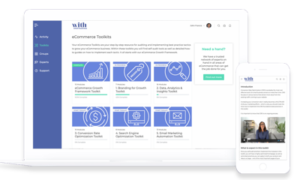What is image optimization?
Optimizing your images to perform best for SEO can be done through image optimization or compression as well as alt-text.
Image optimization relates to setting the optimal size and format of the images you upload to your website as they have a big impact on your page load speed.
Alt-text also called “alt-tags” and “alt-descriptions,” is the written copy that appears in place of an image on a webpage if the image fails to load on a user’s screen, also known as ‘alternative text’. This text helps screen-reading tools describe images to visually impaired readers and allows search engines to better crawl and rank your website.
Why is image optimization important?
Large images slow down your website which creates a less than optimal user experience and makes your Google ranking decrease. Optimizing images is the process of decreasing their file size, using either a plugin or script, which in turn speeds up the load time of the page.
The primary goal of formatting your images is to find the balance between the lowest file size and an acceptable quality. Here are some tips on how to optimize your website images:
WordPress:
For WordPress there are plugins available which can optimize your images automatically when you upload them to your website. We recommend you install Smush.
Shopify & BigCommerce:
- Your product photos should be under 1,000 pixels on the longest side.
- Your image file size is just as important. Try to keep it under 500 kb. File size refers to how much data a file contains or how much storage it will consume.
- Use TinyPNG can compress your images to lower your page load overhead. Some graphics software programs like Adobe Photoshop also feature a “Save for Web” command, which does a similar thing.
- An image’s format refers to how the information is encoded for a computer to interpret. Images can be encoded in a variety of different formats. For most situations on your BigCommerce or Shopify store, using a JPEG or JPG format for your product photos offers the best balance between looking good and loading fast.
There are three reasons for why it is important to have alt-text:
1. Alt-text provides better image context/descriptions to search engine crawlers, helping them to index an image properly. While search engine image recognition technology has vastly improved over the years, search crawlers still can’t “see” the images on a website page like we can, so it’s not wise to leave the interpretation solely in their hands. If they don’t understand, or get it wrong, it’s possible you could either rank for unintended keywords or miss out on ranking altogether.
2. Alt-text will be displayed in place of an image if an image file cannot be loaded.
3. Alt-text is also a principle of web accessibility. Visually impaired users using screen readers.
In general, all your website images should have alt-text and they need to be specific but also representative of the topic of the webpage it’s supporting. Here are some best practice items to follow when writing your alt-text:
- Specifically describe the image. Use the image subject as well as the context to guide you.
- Use 125 characters or less when writing your alt-text.
- Don’t start alt-text with “picture of…” or “Image of…” Jump right into the image’s description.
- Alt-text provides you another opportunity to include your target keyword on a page and another opportunity to signal to search engines that your page is highly relevant to a particular search query. While your first priority should be describing and providing context to the image, if it makes sense to do so, include your keywords in the alt-text of at least one image on the page.
- However, don’t cram your keywords into every single image’s alt-text. If your page contains a series of images, include your keyword in at least one of those images. Identify the one you think is most representative of your topic, and assign it your keyword. Stick to more aesthetic descriptions in the surrounding media.


